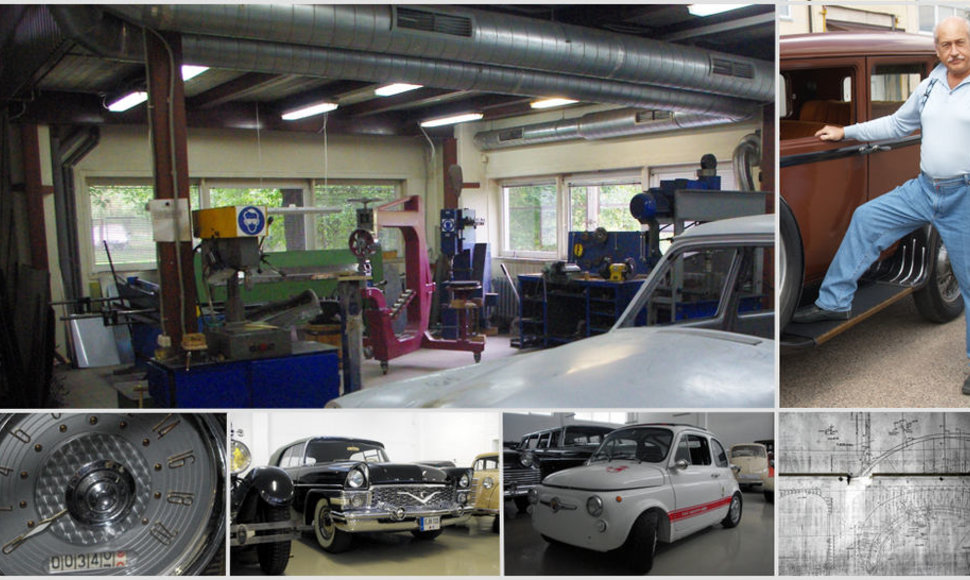Karosas' passion for cars started back in childhood, spent watching rally racing. Later, when he got the means, he started a valuable collection of classic cars. Finally, he turned his passion into a business and opened a restoration workshop in Vilnius.
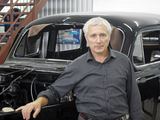 |
| Tomo Digaičio/GAZAS.LT nuotr./Arvydas Šapoka |
Interest in classic cars could not but acquainted Karosas to Arvydas Šapoka, a name that needs no introduction among classic car aficionados. Arvydas was the one who revived the first car in Karosas' collection – the 1934 Mercedes-Benz 500K with Erdman & Rossi bodywork.
Karosas was so fond of cars made in Erdmann & Rossi plants that his collection, kept in Germany, contains quite many specimen of this great brand. Their restoration is done in Germany, where there are more information and spare parts. The workshop in Lithuania, meanwhile, is left in the hands of the man who revived his first Erdmann & Rossi car.
Garage of rarities
Let's get back to Vilnius. Šapoka, who is taking us on a tour around the workshop, is a walking encyclopaedia of Soviet technology. The workshop, therefore, is stocked with vintage Soviet cars.
Arvydas himself no longer toils with wrenches, busying himself with management instead. The certified engineer has to make sure that all the fifteen employees at the workshop have something to do.
“For instance, a painter with a diploma takes care of tiny parts. He makes plastic, glass, rubber parts so well that you cannot distinguish them from originals,” the workshop head introduces one of the fifteen employees.
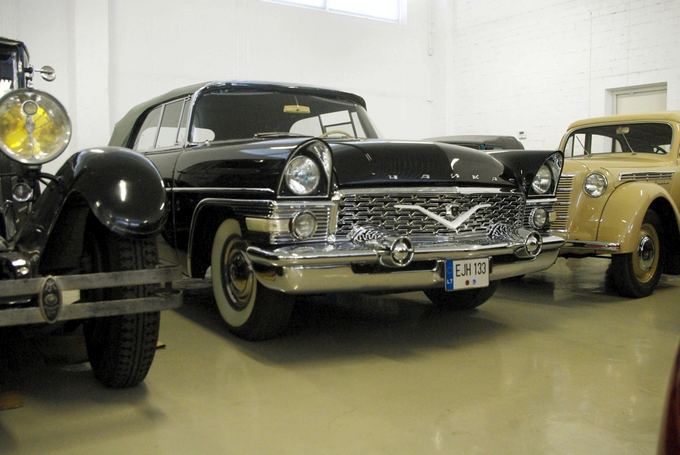 |
| Tomo Digaičio/GAZAS.LT nuotr./GAZ 13 „Čaika“ |
The tour starts at the garage. It houses tens of immaculately restored Soviet-era vehicles. Like the first ZIS, ZIL, and GAZ models that were made exclusively for the highest officials at the Kremlin. These are extremely rare specimen. For instance, only 12 cars were made of ZiS-102A cabriolet. Hardly any survive that still work. None of them was restored. Save one. It is right here, in Karosas' restoration workshop.
Next to luxurious pitch-black limousines is one giant estate-car. GAZ-13 Chaika, produced in a Riga factory, was used as medical vehicle.
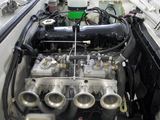 |
| Tomo Digaičio/GAZAS.LT nuotr./VAZ engine |
No one can tell exactly how many of such estate-cars were produced in Riga. It is supposed that there were up to fifteen cars of the more practical GAZ-13 version.
Several engines lay on special holders next to the limousines. One of them is a prototype for GAZ-54 engine, GAZ-11. The experimental version of the most popular eight-cylinder engine in the Soviet Union is extremely valuable today – too valuable, perhaps, to be put into a car.
Šapoka's take on the quality of Soviet technology is simple. With so few engineers and perennially drunk factory workers, he says, one could not have expected a better result.
“While German factories employed tens of thousands of engineers, the Soviet Union would send its brightest engineers to Siberia. Only a handful remained, so factories produced vehicles with serious flaws,” Šapoka says.
The small collection
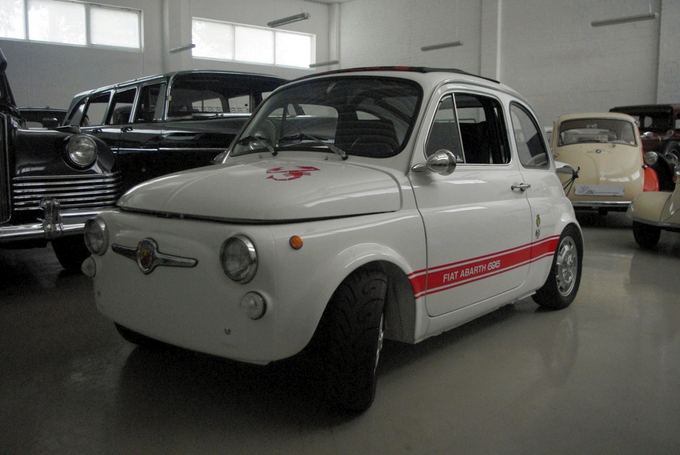 |
| Tomo Digaičio/GAZAS.LT nuotr./„Abarth 695“ - the sporty version of „Fiat 500“ |
A line of smaller vehicles also stands in the workshop. The most outstanding piece of this eight-car collection is the sporty version of the classic Fiat 500 – Abarth 695.
Its most characteristic feature is a hood that does not close. It is not a factory defect but a design solution for an air-cooling engine. The white muscular dwarf sports genuine “semi-slick” tyres, tempting one to try it out in a small race track.
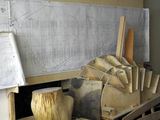 |
| Tomo Digaičio/GAZAS.LT nuotr./Wooden carcass is produced from blueprints to bend steel. |
Parked next to it is a race car VAZ-2101. Old as it is, it smells of race track rather than museum dust. It was made by Henrikas Šilinis, a long-time handler of Stasys Brundza's race cars who now works at Karosas' workshop. The masters have given the car to Karosas on his anniversary.
Seven factories
All the cars under this roof are in a surprisingly good shape. Not even the most pedantic expert could find any flaws. Cabriolet roofs are so well-made that they could be readily attached to new Mercedes-Benz cars.
“I sowed a roof for the first car myself. I had no other choice – products on the market did not meet my requirements. So I made it myself, with the help from an experienced tailor. And we still keep making roofs in one of the rooms at the workshop,” Šapoka reveals.
 |
| Tomo Digaičio/GAZAS.LT nuotr./Most missing parts are made using original blueprints |
And so the conversation turns to the garage-adjacent workshop. This is where all the cars in the garage resurrected for a new life. Or, to be more precise, were revived by the fifteen pairs of hands.
“Our workshop is like seven separate factories. We can do incredible things here. Say, make identical copy of an original grille, from scratch. Not plastic one, as they make them today, but steel grille of a vintage car.”
An old car starts its restoration process in a sandblaster outside, where it has all rust and dirt removed from its steel body. Then the body is boiled, coated with special anti-corrosive covers, primers, and sent to the painting chamber.
The painting chamber is not part of Karosas' workshop – they go to their neighbours for that. However, the painting work is not done by outsiders – a professional workshop employee takes care of it. Only top-quality paint and varnish are used. The resulting coating is pitch-black and shining like the best of Murano glass.
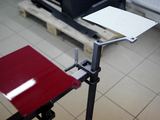 |
| Tomo Digaičio/GAZAS.LT nuotr./Meticulous selection of the right shade |
“It happens that a car arrives without certain bodywork parts. So we make them ourselves. I find blueprints, we produce a wooden carcass, we bend steel. To do that, one requires complex machinery that is difficult to acquire. But that's not a problem – we make it ourselves as well. Once, when we didn't have enough money to purchase machinery we needed, we simply built it ourselves. And it works well until now,” the workshop master relates, showing various pieces of equipment.
Asked how long it takes to restore a car, Šapoka grins and gives an example.
“One workshop specialist spent four weeks restoring six ZIS-101 wheel rims in a rather poor shape. And these were not spoked rims, simple steel pressings. A very simple part, it would seem, but in order to do it right, one must be patient. Just imagine how long it takes to restore the interior, the engine...”
Famous pilot Jurgis Kairys sometimes makes a stop at the workshop. Its employees have more than once taken care of his plane, too.
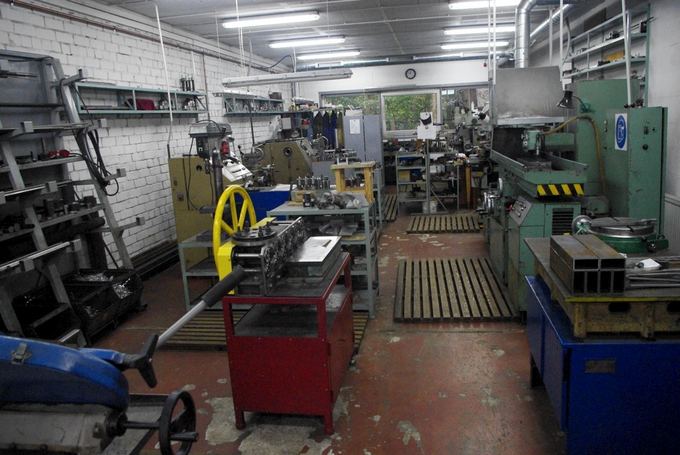 |
| Tomo Digaičio/GAZAS.LT nuotr./Saulius Karosas' automotive restoration workshop |

